In the world of museums it would seem unlikely if not downright preposterous to find circus artifacts mingled with fine art, yet that is precisely what visitors find at the John and Mable Ringling Museum of Art in Sarasota, Florida. With a name like Ringling, the circus connection is not surprising – the benefactors of the museum are the famed couple who owned and operated the Ringling Bros. and Barnum & Bailey Circus for many years. What does surprise is the impressive collection of European, Asian and American paintings and sculptures.
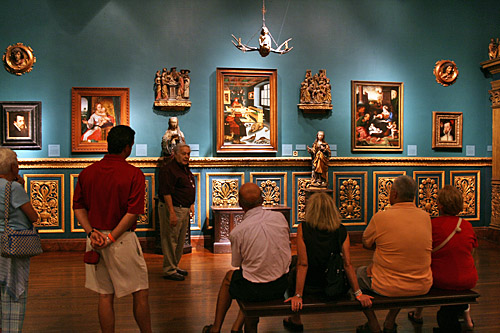
With the great fortune amassed through their circus, John and Mable Ringling traveled extensively throughout Europe. In Italy, especially, they developed a passion for fine art, which led to John becoming a regular at New York and London art auctions during the 1920’s. He purchased masterpieces by Rubens, Titian, Velazquez, Hals, Van Dyck, and Gainesborough, as well as a collection of Cypriot, Greek and Roman antiquities from the Metropolitan Museum of Art. By 1931, Ringling had built a museum designed after the Renaissance and Baroque palaces and museums of Italy to house their ever-growing collection.
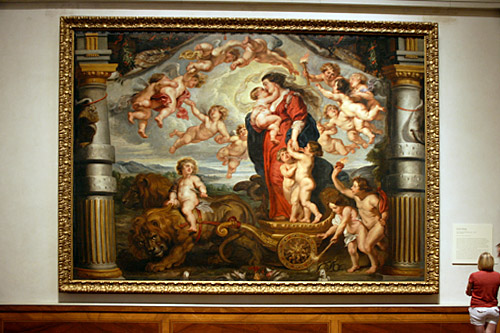
Immediately inside the front doors of the museum hang five enormous paintings by Peter Paul Rubens from the series titled The Triumph of the Eucharist. At a time when the Catholic Church was losing membership to the newer Protestant denomination, Isabella Clara Eugenia, a devout Catholic and daughter of King Philip II of Spain, commissioned Rubens to paint a set of 11 scenes depicting the Catholic celebration of Eucharist or Mass. The paintings were produced for weavers of the day, who used them as templates to create tapestries that hung on the walls of royal palaces and homes of the wealthy. After Eugenia’s death in 1633, the paintings were dispersed throughout Europe. Four of the originals were destroyed in a fire, two eventually landed in the Louvre Museum in Paris; the remaining five were purchased by the Ringlings in 1926, becoming the only large-scale painting cycle by Rubens outside of Europe.Gallery after gallery display the collection of more than 600 paintings by Italian, Flemish, and Spanish artists; indeed the collection of Old Masters, highlighted by the 17th century Baroque period, is considered to be among the finest in the country and does not suffer in comparison with the collection of the Uffizi in Florence, Italy. Even the outdoor courtyard in the center of the museum is filled with art. As in Vatican Square, sculptures ring the roof of the museum and gaze down upon the courtyard, which features casts of original antiquities and renaissance sculptures, including David by Michelangelo; the Fountain of Tortoises, one of three replicas from the Piazza Mattei in Rome; and Oceanus Fountain, copied from the 16th century original by Giovanni Bologna in Florence’s Boboli Gardens.
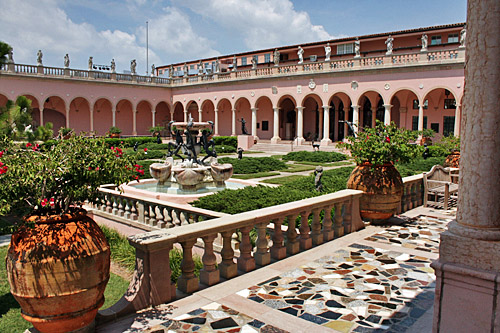
Beyond the art museum is Ca d’Zan, the 36,000 square foot, 56 room mansion that was once the Ringlings’ personal home. Built in the style of the Venetian Gothic palaces they so loved, it became the cultural epicenter of Sarasota upon completion in 1926. Ca d’Zan was constructed from terra cotta blocks, concrete, and brick, covered with stucco and terra cotta, and embellished with glazed tile. The original roof was made from imported 16th century Spanish tiles and the bayfront terrace is paved with domestic and imported marble. Lavish parties featured full orchestras on the marble terrace overlooking Sarasota Bay, where their private 70-foot yacht was tied up. Today the mansion, filled with art and original furnishings, is open for public tours.
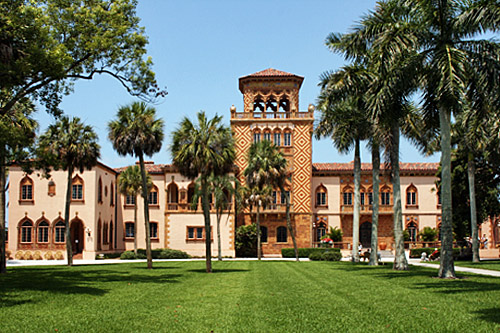
Two additional buildings on the grounds of the Ringling Art Museum house the Circus Museums. Though a visit to these facilities on the heels of the Art Museum and Ca d’Zan is somewhat like stepping into an alternate universe, the Circus Museums house a fascinating array of memorabilia from this bygone era, as well as authentic circus wagons, calliopes, rolling animal cages, boxcars, costumes, and even the original Pullman train car that carried the Ringlings to Big Top sites around the country.
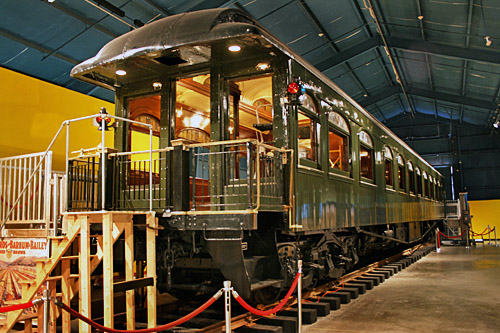
The Tibbals Learning Center is home to the world’s largest miniature circus, The Howard Bros. Circus Model. This 3/4-inch scale model is a replica of Ringling Bros. and Barnum & Bailey Circus when it was at its largest (circa 1919-1938). Occupying 3,800 square feet, it contains eight main tents, 152 wagons, 1,300 circus performers and workers, more than 800 animals, and a 57-car train.
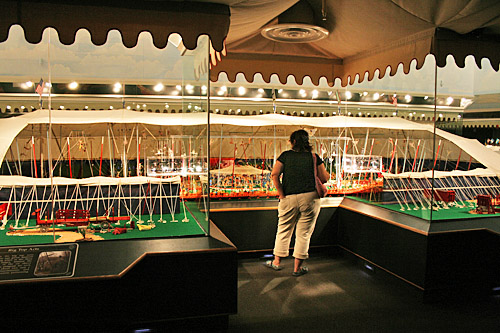
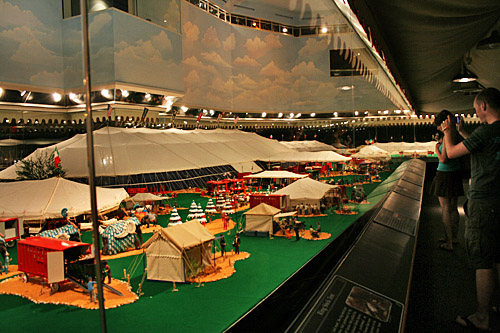
Even the grounds of the museum are stunning, featuring behemoth old-growth Banyan trees sprouting a dense tangle of air roots; gnarled oaks draped in Spanish moss, lush groves of ferns; and an exquisite rose garden originally planted by Mable Ringling in an authentic Italian wagon-wheel design.
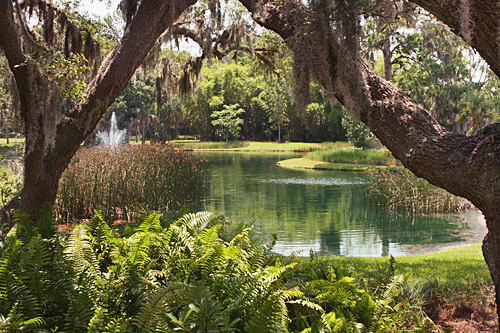
When John Ringling died in 1936, he bequeathed his art collection, mansion and estate to the people of the State of Florida. Now managed by Florida State University, the John and Mable Ringling Art Museum is open seven days a week from 10 a.m. to 5:30 p.m., with the exception of Thanksgiving, Christmas, and New Year’s Days. Admission is $20 for adults, $17 for seniors (65+), $7 for students, Florida teachers, and military, and children ages 6-17 (free under 6). However, Ringling’s bequest mandated that admission to the Art Museum be free one day a week, in perpetuity (does not include free admission to the Ca d’Zan and Circus Museum). Although the Museum does not divulge it on their website, there is no admission charged for the Art Museum on Mondays, and (also a little known fact) the grounds can be wandered for free any day of the week.

I went here browsing dark culture! This post definetly has a strange visibility on bing even if it wasn’t sadly what I searched
Another great blog. I live in Sarasota and worked at the Ringling Museum from 83-86. At the residence on the Sarasota Bay. The banyan trees here are something else. A great job. My Florida travel blogs have not covered the Ringling Museum, but you have done a great job with it. All the best.